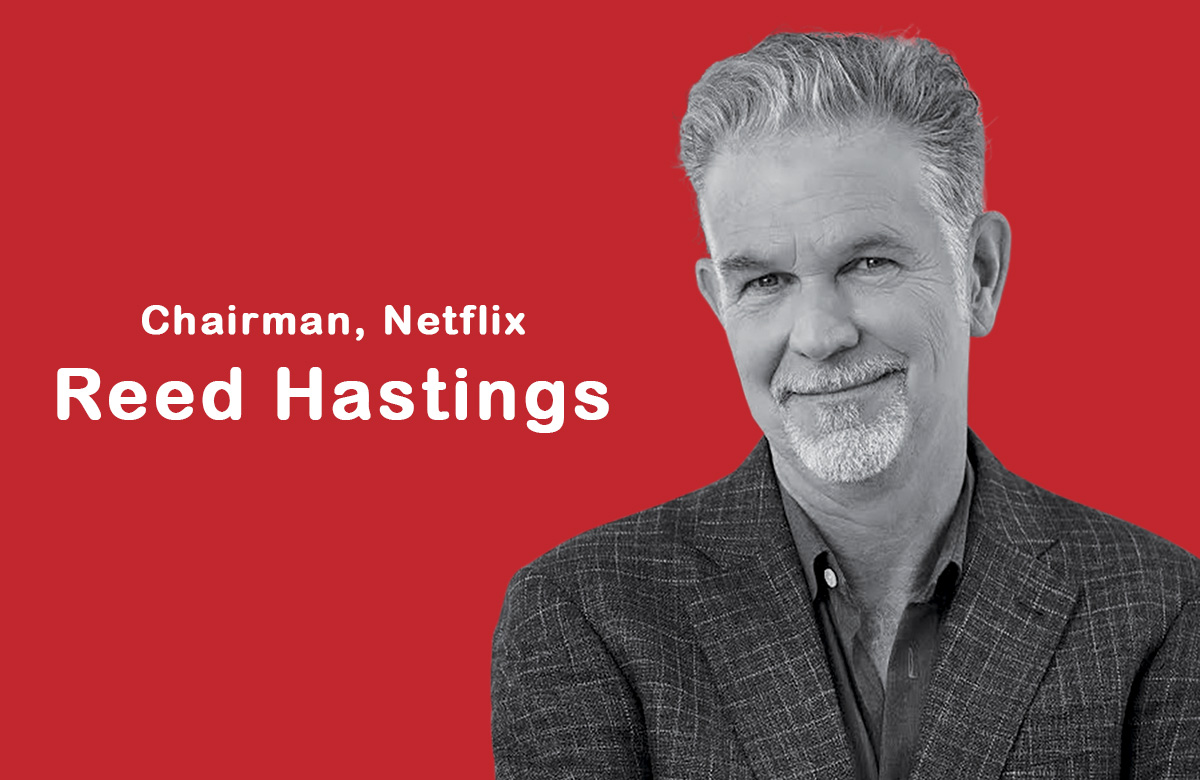In 1997, Reed Hastings faced a common problem: he forgot to return a DVD and was hit with a $40 late fee. That small annoyance sparked an idea that would revolutionize entertainment — Netflix .
Starting as a DVD-by-mail rental service , Netflix evolved into the world’s leading streaming platform , with over 230 million subscribers globally and a market value of more than $160 billion .
This is the inspiring journey of how one man turned a late fee into a streaming empire — reshaping how we watch movies, series, and even original content.
Early Life & Background
A Passion for Learning
Born in 1960 in Boston, Massachusetts, Reed Hastings grew up in a family that valued education and innovation. He studied computer science at Bowdoin College and later earned a master’s degree from Stanford University.
Before founding Netflix, Hastings:
- Served in the U.S. Marine Corps
- Taught math in the Peace Corps in Africa
- Founded a successful software company called Pure Software
His background in tech and education gave him the mindset to challenge traditional industries — which would soon lead to the creation of Netflix.
The Birth of Netflix
A Late Fee That Changed Everything
Hastings’ frustration with Blockbuster’s high late fees led him to wonder: What if you could rent movies without due dates?
He co-founded Netflix in 1997 with Marc Randolph , offering a subscription-based DVD rental model by mail.
At first, the idea seemed risky:
- Online shopping wasn’t mainstream
- Internet speeds were slow
- People weren’t used to not owning media
But Hastings believed in the future of digital entertainment — and Netflix began gaining traction.
By 2000, Netflix had introduced its now-famous subscription plans , allowing users to rent unlimited DVDs for a flat monthly fee.
Pivot to Streaming
The Game-Changer
In 2007, Netflix launched online streaming , a move that many considered bold — even reckless.
At the time:
- Broadband internet was still growing
- Most people watched TV or rented DVDs
- Competitors like Blockbuster were still dominant
But Hastings saw what others didn’t: the future was digital .
Netflix started investing heavily in:
- Original content (e.g., House of Cards)
- Licensing deals with studios
- Personalized recommendation algorithms
The result? By 2011, Netflix became the largest source of downstream internet traffic in North America during peak hours.
Global Expansion & Innovation
Building a World-Wide Platform
From 2010 onward, Netflix aggressively expanded beyond the U.S., launching in Canada, Latin America, Europe, Asia, and Africa.
Key milestones include:
- 2013 – Launched original series House of Cards
- 2015 – Became available in over 50 countries
- 2016 – Expanded to 190 countries
- 2020 – Surpassed 200 million subscribers
- 2023 – Began experimenting with mobile gaming, advertising, and AI-driven content
Netflix also embraced local storytelling, producing hit shows in multiple languages:
- Money Heist (Spain)
- Sacred Games (India)
- Squid Game (South Korea)
Today, Netflix continues to evolve — proving that adaptability is key to long-term success.
Business Lessons from Reed Hastings
- Turn Problems Into Opportunities
A $40 late fee led to a multi-billion-dollar idea — showing that great businesses often start with everyday frustrations . - Be Willing to Disrupt Yourself
When Hastings shifted Netflix from DVDs to streaming, he essentially killed his own product — but saved his company. - Invest in the Future
Even when profits were low, Netflix kept investing in technology, content, and global expansion — a long-term strategy that paid off. - Lead with Vision, Not Fear
While competitors stuck to their old models, Netflix boldly embraced change — even when it meant going against industry norms. - Focus on Customer Experience
Netflix built its brand around convenience, personalization, and quality — making it easy and enjoyable for users to watch what they love.
Motivational Takeaways

Reed Hastings’ journey teaches us powerful life and business lessons:
| LESSION | EXPLANATION |
| Start with a Problem | Great ideas often come from solving your own pain points. |
| Adapt or Die | Companies that don’t evolve risk becoming obsolete. |
| Think Long-Term | Short-term losses can lead to massive long-term gains. |
| Be Bold | Sometimes, the biggest risk is playing it safe. |
| Believe in Your Vision | Even when no one else does, stay committed to your mission. |
Conclusion – From DVDs to Dominance
Reed Hastings’ rise from a frustrated movie renter to the CEO of a global streaming giant proves that vision, persistence, and adaptability can create something truly extraordinary.
Netflix’s story is a reminder that innovation doesn’t always mean inventing something new — sometimes, it means reimagining what already exists .
So whether you’re building a startup or chasing a dream, remember Hastings’ philosophy:
You want to be the disruptor, not the disrupted.
Stay curious. Stay hungry. And never stop evolving.
